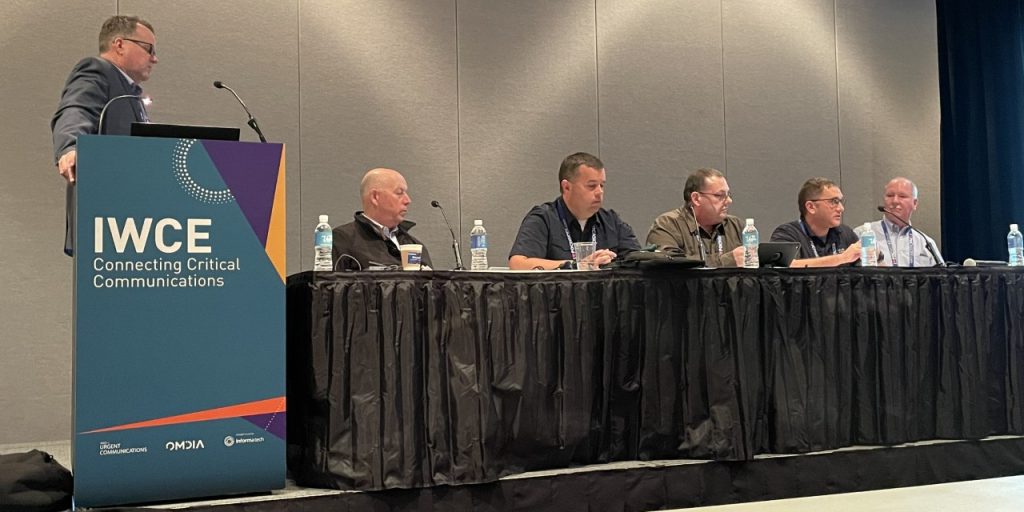IWCE 2023: Enhanced bandwidth and cybersecurity in the face of natural disasters
In the aftermath of natural disasters or emergency incidents, much focus is placed on the actions of frontline first responders as they rescue those in need and mitigate the immediate danger. Meanwhile, the support functions of telecommunication professionals often go unseen—both literally and figuratively—even when the radio waves above are just as congested as the scene below.
Their mission is becoming more vital than ever as public safety technology requires an increasing amount of bandwidth.
“We’re seeing a lot more demand for portable on-demand. The day-to-day needs just continue to rise,” said Kevin Nida, senior public safety advisor for FirstNet Authority, during a panel conversation titled “Wildfire and All Hazards Response” at IWCE 2023 in Las Vegas. Compared to what’s available at a fire station, “The expectation is that you have the same connectivity and the same up-and-down speeds in the wildland.”
All that bandwidth has brought with it a new challenge: cybersecurity, even when operating in remote or after natural disasters.
“With more users than ever, more bandwidth than ever, how do we intelligently manage what’s going through?” asked Jason Matthews, emergency management bureau sergeant at the Lake County Sheriff’s Office in Florida. “If I have a compromised endpoint, do I just block them from the network? What about if the compromised person is the incident commander? Do I just hand them another machine?”
Given this rising digital threat within the public safety sector, Matthews stressed the importance of good pre-planning and an organizational-wide grasp of cybersecurity hygiene—like multi-factor authentication and regular updates. Robust protocols and regular staff training is vital, especially considering the staffing shortages public sector cybersecurity departments across the United States face, according to Chuck MacFarland, chief of air operations for the San Diego Fire-Rescue Department.
“I think it’s one of the biggest threats that all agencies have. We need to give it more attention,” MacFarland said, noting that public organizations are often reactive to threats instead of addressing vulnerabilities before they’re exploited. “A lot of times, we don’t have deep enough benches for positions.”
During natural disasters and daily operations, the lines between telecommunications and IT are blurring as voice transmission gives way to data. And the challenges will only increase as technology like satellite connectivity advances. When responding to the aftermath of Hurricane Ian in Florida last year, Matthews said they received two trailers filled with hardware to connect to satellites. Starting in areas where the infrastructure had been completely devastated, their organization had first responders fully connected in days.
“We had Starlink set up on command posts everywhere. We had them bungee corded on DOT vehicles, we pretty much had them everywhere,” he said. “It really did make a huge impact on getting data to the incident edge in a very rapid manner and got agencies some sort of connectivity. This stuff is sucking cable modem speeds out of the sky. It’s amazing. It quickly turned radio technicians into IT technicians really fast. Low earth orbit satellite is definitely where it’s at for the future.”
Matt Runyan, leader of mission readiness deployment for Cisco’s crisis response group, said he expects recent satellite developments will act as a catalyst for rapid evolution within the space.
“It’s nice to see that it’s lowering the barriers for entry and raising the expectations. I think it’s a big thing for the industry overall,” he said.
IWCE 2023, an annual telecommunication trade show for which American City & County is a media partner, started Monday and will continue through Thursday. It will feature informational sessions, networking opportunities, vendor exhibits and various keynote addresses from industry experts and leading voices.




















